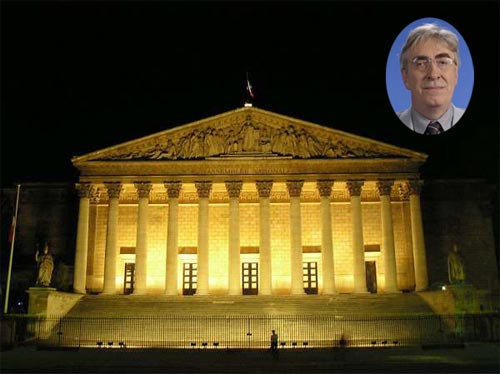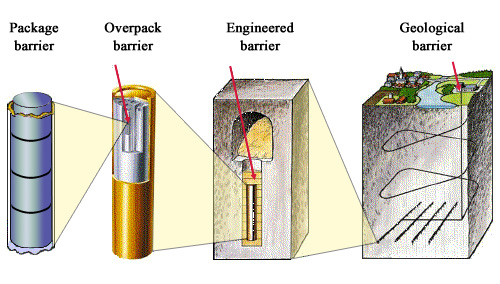The 1991 and 2006 Acts

France: two major nuclear waste acts
Since 1991 France has had a law on radioactive waste. The law is better known by the name of the man who initiated and tirelessly crafted it, the Nord department MP, Christian Bataille. Reassuringly, it attracted a consensus, with deputies and senators on all sides for once united and acting responsibly to deal with this important matter in the public interest. A new law was passed in June 2006, extending the 1991 Bataille Act and setting new deadlines.
© DR
In 1991 France passed a law to organise the management of radioactive waste, the Bataille Act. This Act, which bears the name of its indefatigable and highly respected promoter, was introduced as a follow-up to earlier studies, notably one by the Castaing Commission. The Act has now been extended by a new law passed on 28 June 2006 (2006 Act). Within this legislative framework a major research programme was launched, the aim of which was to find the most appropriate way of managing the most highly radioactive waste.
The research covers three main areas of study:
– 1) The separation and transmutation of long-lived radioactive nuclei;
– 2) The deep geological disposal of ‘high-level long-lived’ waste;
– 3) The conditioning and storage of waste, which may also be long-term.
The Bataille Act imposed a moratorium until the first decisions were made and set 2006 as the date for an evaluation of the research. Over the 15 years from 1991 to 2006, numerous progress reports kept Parliament informed of the progress of the work.

Complementary aspects of research on radioactive waste
With better ‘conditioning‘, the barriers provided by packages and containers will be improved, in addition to those provided by the concrete structures and geological stratum of the ‘deep geological repository‘. ‘Separation and transmutation’ will reduce the amount of waste to be buried, and an extended period of ‘storage’ will mean that the disposal facilities can be smaller because the packages will have cooled down.
© SKB
This moratorium, which might seem paradoxical given the extreme radioactivity of the materials in question, was actually a very sensible move. Managing these materials is not an urgent matter if properly managed storage facilities exist, which is the case. There is not a huge amount of this waste, and as time passes it cools down, loses some of its radioactivity, and becomes easier to handle. The moratorium provided valuable breathing space for technologies to mature and for choices affecting future generations to be weighed up.
The public authorities gave CEA (the French Alternative Energies and Atomic Energy Commission) responsibility for managing the research in areas 1 (Separation and Transmutation) and 3 (Conditioning and Storage) and gave ANDRA (the French National Radioactive Waste Management Agency) responsibility for managing the research in area 2 (Disposal). CEA and ANDRA collaborate with laboratories run by the CNRS and universities, and with EDF and AREVA, the companies that produce and manage the waste. There is international collaboration on all the research, mainly with other European countries.
The French National Assessment Board (CNE) has been given the task of monitoring and commenting on the progress of the research. Twelve people sit on this Board, four of whom are scientific experts, and it prepares reports that are submitted to the French Parliamentary Office for the Evaluation of Scientific and Technological Choices (OPECST).
The cost of the research into radioactive waste management was 210 million euros in 2000, split more or less equally between the three areas. It was funded by a contribution from the nuclear industry in accordance with the ‘polluter pays’ principle (the contribution is included in the price of a kilowatt-hour) and an allocation from CEA’s budget.
Other articles on the subject « Waste Outlooks »
Area 1: Partitioning
Sorting the radioelements in radioactive waste The separation, or partitioning, of the radioactiv[...]
Partitioning: results
Development of processes and extractant molecules The 2006 assessment of research into partitioni[...]
Advanced partitioning
Partitioning of nuclear waste: hot chemistry Advanced partitioning goes beyond just the partition[...]
Area 1: Transmutation
Area 1: Transmuting or transforming radioactive atoms Transmutation is the second part of researc[...]
Transmutation facilities
Fast reactors and Accelerator Driven Systems (ADS) The neutron, which easily penetrates nuclei, i[...]
Transmutation prospects
A far away objective for Generation IV and 2040… At the time of the first tests on the tran[...]
Area 2: Disposal
Research into deep geological disposal Can the nuclear industry’s final waste, which we cur[...]
Area 3: Long Surface Storage
Research into long-term storage Research into long-term storage is the second research topic in a[...]
Long surface storage concepts
Long-term surface and subsurface storage Research into very long-term storage is a matter for the[...]
Area 3: Conditioning
Area 3: Research into conditioning The conditioning of high-level and intermediate-level waste is[...]